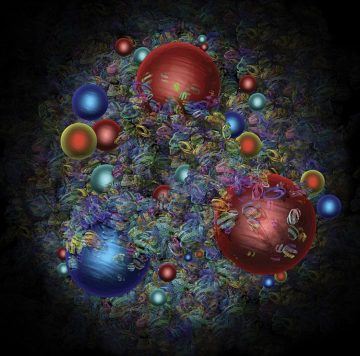Natalie Wolchover in Quanta:
 In 2010, physicists in Germany reported that they had made an exceptionally precise measurement of the size of the proton, the positively charged building block of atomic nuclei. The result was very puzzling.
In 2010, physicists in Germany reported that they had made an exceptionally precise measurement of the size of the proton, the positively charged building block of atomic nuclei. The result was very puzzling.
Randolf Pohl of the Max Planck Institute of Quantum Optics and collaborators had measured the proton using special hydrogen atoms in which the electron that normally orbits the proton was replaced by a muon, a particle that’s identical to the electron but 207 times heavier. Pohl’s team found the muon-orbited protons to be 0.84 femtometers in radius — 4% smaller than those in regular hydrogen, according to the average of more than two dozen earlier measurements.
If the discrepancy was real, meaning protons really shrink in the presence of muons, this would imply unknown physical interactions between protons and muons — a fundamental discovery. Hundreds of papers speculating about the possibility have been written in the near-decade since.
But hopes that the “proton radius puzzle” would upend particle physics and reveal new laws of nature have now been dashed by a new measurement reported on Sept. 6 in Science.
More here.
